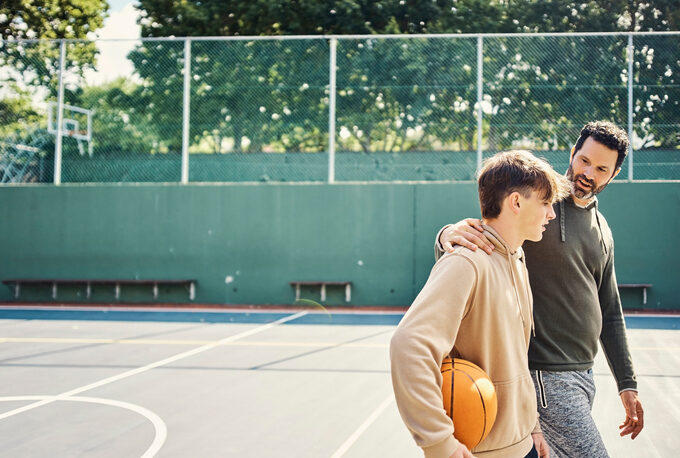“No pain, no gain.” “Walk it off.” “He has a high tolerance for pain.” I’ve heard each one of these quotes and more during my many years as a pediatric orthopedic surgeon specializing in sports medicine.
Many of them are actively detrimental to the health of your child, not just at that moment but when they grow into a professional athlete as well. As you already know sports injuries can be life-changing, that’s why many professional athletes take out long term disability insurance in case they are left permanently out of action. Would you be willing to put your child at risk of permanent injury because of a few false preconceived notions you can easily avoid? The answer should always be “no”.
How many sports injury myths do you believe to be true? Here’s a list of the most popular things I hear regarding preventing and dealing with sports injuries, and the real truth you and your young athletes need to know.
1. “Rest is best.”
Okay, this one is mostly true. It’s okay to play through general muscle soreness. But if your child is feeling persistent pain while exercising or playing sports, it’s a good idea to have them evaluated to be sure it’s not something serious. For most kids with minor injuries, rest will most likely help the body heal and solve the problem.
2. “She’s playing through pain,” or “No pain, no gain.”
It’s never a good idea to play through pain. A child shouldn’t even push to the point of pain. In fact, playing a sport or exercising should not be painful. If it is, it could be a sign that a child is doing the particular activity wrong. Or worse, it could mean your child is actually injured and is training through the injury.
If your child feels sore, fatigued, or cramps up during exercise, it’s okay to work through these and continue the activity. But if they are feeling acute pain, or something they know just doesn’t feel right, then they should stop, rest, and get it checked out by a physician.
3. “Stretching before exercise will prevent injury.”
There are so many opinions circulating about this topic. But the most recent studies reveal that stretching before exercise or activity may hamper muscle performance. Research has shown that “static” stretching (holding a stretch longer than a few seconds) doesn’t actually prepare muscles for the workout. Rather, it weakens them, making the body more susceptible to injury.
I do recommend to kids that they warm up before their activity. They can do this by running practice drills or doing lighter versions of their actual activity. For instance, runners should start with a light jog, baseball players should take some easy practice swings, and tennis players should do some light volleys. The goal is to get the body warm and to prime the muscles and tendons before the activity begins.
Dynamic movements should also be incorporated in the warm-up, which does include stretching within the movements. For example, high knees, hip circles, squats, and lunges will all get the body warm and the muscles prepared for what’s to come.
4. “Being strong will prevent injury.”
If this were true, football players would never get injured. Honestly, though, any athlete can get injured at any time. Building muscle strength is definitely important to allow the body and joints to move against large acts of resistance, such as lifting, jumping, and running. But those muscles can still tear, tendons can rip, and bones can break – especially if an athlete is over-exerting, fatigued, or dehydrated. Proper training and conditioning are still the best ways to lower the risk of injury.
5. “Use heat to treat.”
Many know this by now, but it’s a good reminder to all that for an acute injury, ice is the best treatment. After an injury, there’s a lot of blood flowing to the injured area, causing the swelling. Ice will help reduce that initial swelling as well as naturally numb the area to help diminish the pain. Using heat could actually cause the area to swell more. There are instances when heat is recommended, but talk to your doctor first.
6. “My child has a high tolerance for pain.”
I can’t tell you how many parents have said this to me. This might be the most common of the sports injury myths I hear. Everyone feels pain. But how we react to that pain can be very different. Some kids may ignore the pain because they don’t want to miss their season or let anyone down. Some may think if they play through the pain, it will make them more of an athlete and toughen them up. But the bottom line is that all they’re doing is causing the pain to worsen and possibly prolonging the amount of time it will take them to recover. If your child feels any persistent pain, no matter how they define it, have them rest and get them to a doctor.
7. “Feeling a ‘pop’ is a bad sign.”
This may or may not be true. Your child may explain they heard or felt a “pop,” and your first thought may be that it is a serious injury. But without proper evaluation there’s no way to know for sure. Along the same lines, just because your child can move the injured arm or walk on a hurting leg, that is not a sign that something serious didn’t occur. If your child feels pain after an acute injury (an acute injury is sudden, usually involving a collision or twisting, and causes immediate severe pain), have it evaluated right away, regardless of what sound they heard or how well they can walk or move.
Learn More
Nemours Center for Sports Medicine
KidsHealth Sports Medicine Center



